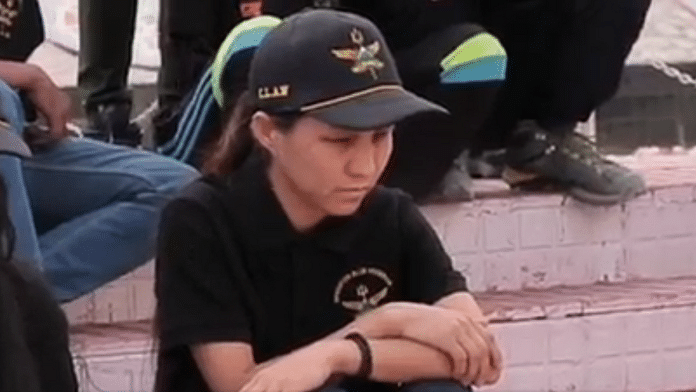During my recent trek to Everest Base Camp, I noticed something striking. I was guiding two persons with disabilities —a blind woman, Chhonzin Angmo, from Kinnaur, Himachal Pradesh and an above-knee amputee, Vinod Rawat from Mumbai. While most of our fellow trekkers quickly noticed and responded to Rawat’s physical challenges, Angmo’s struggles went largely unnoticed. Despite her blindness being an obvious obstacle on the difficult terrain, many seemed unaware of her unique challenges. This experience left me reflecting on how we, as a society, perceive disabilities, especially those that are invisible to the eye.
It became clear to me that Angmo’s blindness was not deliberately overlooked. Rather, it reflected a larger societal issue—our lack of awareness and understanding of how to interact with blind individuals. Physical disabilities, such as amputations, are immediately visible, making them easier for people to comprehend and respond to. However, disabilities like blindness, which do not manifest in obvious ways to the untrained eye, are often misunderstood or even ignored.
Throughout the trek, many people seemed uncertain about how to communicate with Angmo. It wasn’t that they didn’t want to engage with her, but rather they were unsure of how to do so. This is a common scenario—when people haven’t had the opportunity to interact with those who are blind or visually impaired, they can feel awkward, and afraid of saying or doing the wrong thing. This hesitation leads to the unintended consequence of making the blind feel invisible, even in social spaces where inclusivity should be a priority.
This lack of understanding highlights an essential gap in our education and societal structure. Too few of us have gone or go to school or work with individuals who are blind or have other disabilities, and this limited exposure perpetuates discomfort and misconceptions. People often fail to realize that blind individuals are just like everyone else—they laugh, joke, have interests and enjoy activities, and most importantly, they communicate in the same way as anyone else. The only difference is that they cannot see.
Challenges and triumphs
Both Angmo and Vinod embarked on the Everest Base Camp trek, a formidable challenge that tests even seasoned adventurers. The trek spans 132 km (starting from Lukla to EBC at 17,598 ft/5,364 mts and back to Lukla) in rugged and high-altitude Himalayan terrain, demanding not just physical endurance but also mental toughness.
For Angmo, navigating the steep and rocky paths was a unique challenge. While she had prior mountaineering experience, the constantly changing terrain of EBC – from icy trails to narrow, uneven paths bordered by precipitous drops – required her to rely heavily on her guides for precise and accurate descriptions of each step. The high altitude and unpredictable weather further intensified the challenge, demanding acute spatial awareness and a deep trust in her team. Despite these hardships, her past training in mountaineering served as a solid foundation, helping her face each obstacle with a prepared mind and unyielding spirit. Angmo has completed her basic mountaineering course and has climbed a few peaks in Ladakh.
Rawat, a unilateral above-knee amputee and an experienced adventurer in his own right, faced a different set of challenges. EBC marked his first Himalayan trek, making this a journey filled with new and intense trials. The high altitude and steep ascents taxed his endurance, while the rocky and slippery paths tested the strength and stability of his prosthetic leg. Each step was an exercise in balance, as he adapted his pace to the challenging conditions. Physical exertion was intensified by the altitude, making simple tasks feel monumental and turning each day’s trek into a true feat of determination and grit.
But what was commendable is that together, Angmo and Vinod exemplified resilience. They not only faced the physical obstacles of the Himalayas but also braved the mental challenges of the EBC trek. Their journey was marked by overcoming fears, building trust in their team, and setting new personal benchmarks amid the humbling and inspiring landscapes of Everest.
Also read: Adventure tourism is not accessible for women—sexual harassment, safety risks
Work toward seeing
For society to perceive and treat the blind correctly, we need to actively work toward normalising disability. This includes creating more spaces where disabled and non-disabled individuals can interact, engage, and learn from one another. Schools, workplaces, and public spaces must be more inclusive and accessible to ensure that everyone has the opportunity to connect with people from all walks of life. Only through increased exposure and education can we break down the barriers of ignorance and fear, fostering a society that truly embraces diversity.
Their journey underscores not just the physical barriers to overcome but also the mental fortitude required to conquer such a formidable environment. Even the fittest were seen giving up or coming back in a pony or a helicopter from EBC. Angmo and Rawat’s accomplishments—navigating the majestic yet daunting paths of Everest—are testaments to their unyielding spirit and resilience. Angmo also set a record of being the 1st Indian blind woman to complete the entire trek to EBC.
In reflecting on this, it’s clear that for society to fully appreciate and support individuals with disabilities, it’s time to start seeing beyond what is immediately visible and begin treating all disabilities—visible and invisible—with the empathy and understanding they deserve. Normalising disability means recognising that blindness doesn’t limit someone’s ability to live fully, it just requires different ways of navigating the world. By educating ourselves and creating more inclusive spaces, we can ensure that everyone, regardless of their abilities, is seen, heard, and respected. Only then will the invisible truly become visible and we can truly support and celebrate every individual’s contributions and successes.
Anusha Subramanian is an independent journalist, mountaineer, and entrepreneur who has been writing specifically about adventure and mountaineering for over a decade. She posts under @sanushas. Views are personal.
(Edited by Humra Laeeq)






